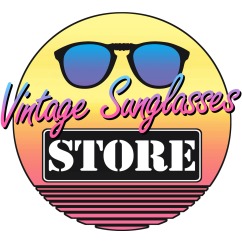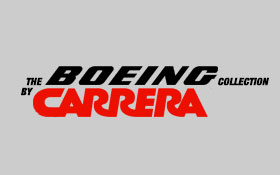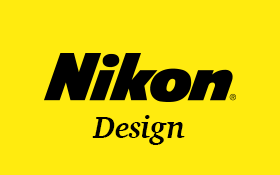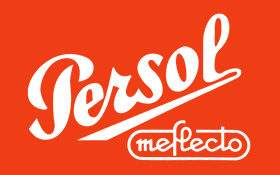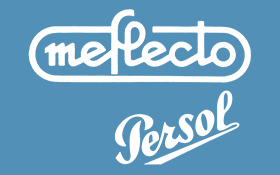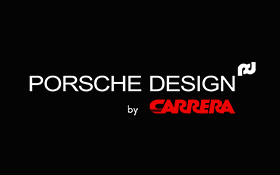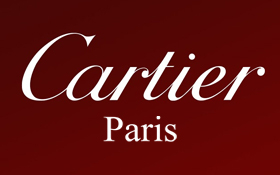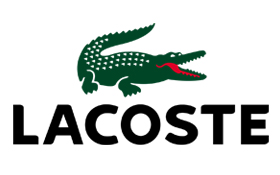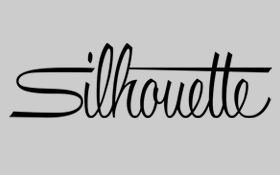You have no items in your shopping cart.
THE HISTORY OF BRANDS
The term “VINTAGE” comes from French “l’age du vin”, originally referred to the most prestigious wines’ grape harvests, as with the passing of time the wine becomes richer in the flavor and consequently finer.
Vintage style’s main feature, indeed, is the valorization of quality, over quantity. At the same time, sunglasses defined as “vintage” are products which count for at least 20 years since their assemblage. Precisely, an object made in the past, which acquired value and importance thanks to its elegance and uniqueness.
Exactly for this reason the vintage sunglasses we offer have very high quality standards and are hard to find elsewhere.
Going through the list of brands we sell you will discover about their history, their technical features and the brands’ ideal of quality followed in many years of activity, and which, in our opinion, cannot find its right fulfillment in today’s productions. In line with the vintage philosophy, our main objective is to offer an efficient and competent service to our clients, including quality, uniqueness and valorization of our products.
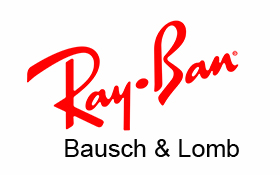 Ray-Ban by Bausch & Lomb all glasses...
Ray-Ban by Bausch & Lomb all glasses...
Ray Ban was founded in 1937 in the United States, as brand of the major firm Bausch & Lomb, from New York, which used to deal mainly with medical production.
To date it probably keeps being the most popular optics manufacturing company in the world.
During the ‘20s the American Aviation Army was working at the construction of sophisticated airplanes able to fly over long distances and at high altitudes. As consequences of the direct beam exposure during such long flights American pilots were accusing strong headaches and nausea. General John McCready, realized the need to find a solution for this problem, which might have compromised the missions’ outcomes. They turned then to Bausch & Lomb, which at that time was one of the leading companies in medical production, to create special glasses, in line with the needs of the Aviation Army.
Finally in 1936, after many years of constant studies and research, Bausch&Lomb managed to create a new pair of sunglasses with plastic frame and green lenses, which had the peculiarity at the same time of neutralizing the irritating glare due to direct beam exposure, and preserve the vision of contrasts.
The following year Bausch&Lomb redefined the first prototype. The plastic frame was replaced by a metal frame and the glasses were patented under the name “Ray-Ban anti-glare”. The whole design was studied for high altitude aviators. The drop shape lenses were exactly thought to perfectly follow the eye’s cavity. The frame used was extremely light (around 15 grams), in goldplated alloy (“Arista”), with transparent and rigid plastic endings, while infrared and ultraviolet rays were filtered through the green lenses, made of mineral glass with lighter orbits.
Afterwards the “Ray-Ban anti-glare” model was renamed “Ray-Ban Aviator” and the color of the lenses became darker as we see it today. The “Ray-Ban Aviator” model became a milestone in the history of style. Later on, new models were released, the “Outdoorsman” with an anti-sweat bridge, and the “Shooter”, with a little metal circle as bridge between the two lenses which served as cigarette case.
Both of them had the distinguishing feature of temples ending with semi-soft parts winding round the ear from above and all around going up to the auricle. Such surrounding parts had to be wrapped around an unwrapped each time one would wear them. Moreover, during the ‘40s, the “Gradient Mirror Lens” was patented with shaded lenses combining a high protection from light and better focus on objects. Then in the Post-war, during the legendary ‘50s and the Hollywood boom, the popularity of the brand grew further, also thanks to worldwide famous cinema stars who were often seen wearing Ray-Ban B&L sunglasses.
We remember 1952 as another noteworthy year in the outstanding history of Ray-Ban B&L. That was when the Wayfarer model was designed and produced, and went down in history as one of the most popular ever sunglasses. Often worn by cinema stars such as Marylin Monroe, Audrey Hepburn, James Dean and Bob Dylan. The sunglasses were initially made of plastic. One year later the classical and innovative lens G-15 was added, in grey and green colors. In 1953 came out the very elegant “Signet” model, in golden or silver metal, featured by its unique prominent limbs. Further innovations during the ‘50s were the invention of G-15 lens in grey (1953) – a lens of a neutral grey which offered a more realistic vision of colors and better protection from beam exposure.
In 1957 came out also the “Caravan” model: in metal, with squared lenses (as alternative to the drop shaped lenses of the “Aviator” model), worn by Robert De Niro in the film “Taxi Driver”.
During the ‘60s Ray-Ban BL fits perfectly the Rock n Roll’s atmosphere of the struggle for female emancipation. They start producing impact resistant lenses, much more resistant to collisions and models for women with very thick plastic frames and big dimensions, going well beyond the shape of the face.
Few tears later, in 1965, the “Olympian” line was produced, with metal frame as well, featured by a metal bridge forming a gentle curve, and with rounded squared lenses reintroducing a classical shape with a new elegant touch. The RayBan “Olympian I Deluxe”, the brand’s most famous model, became popular thanks to Peter Fonda who wore it in film “Easy Rider”. In this period also Ray-Ban models “Meteor” and “Laramie” will come out.
During the ‘70s Ray-Ban is still on. In 1973 Harry Callahan, thanks to the tv series “Magnum Force”, made the “Balorama” model popular, a fantastic line of the Contemporary series. Ray-Ban Bausch&Lomb sunglasses appear in these years in many TV series, and the collections increase with many different models, as they respond to a society in economic boom expressing different needs and change of style. In that period many models including the Aviator had semi-soft endings wrapping up around the ears exactly as the ‘40s models.
Moreover, it was popular to bend the glasses frontally on the central part above the nose, towards the face, so to make the two lateral extremities to which the temples were attached move back, giving a strange aerodynamic shape to the glasses themselves.
The models “Vagabond” and “Stateside” were then created and soon became symbol of the ‘70s and of disco music. Also glasses with high technical features for mountain climbers appeared, which had mirror lenses and lateral leather protections in order to reflect strong light and save the eye from the sun and wind. Also the photochromic Ambermatic lens was created, able to change color depending on sun and weather conditions, perfect for winter sports.
During the ‘80s Ray-Ban B&L becomes even more popular, sponsored by stars such as Tom Cruise in Top Gun and Risky Business, or the Blues Brothers, who accounted for an increase in sales of the Aviator, Caravan and Wayfarer models of 40%. Moreover, in this period the series “Wings” was launched, with mask shaped lenses coming in different colors.
During the ‘90s BL Ray-Ban's popularity burst out with the production of different models of unique beauty and with the typical brand’s manufacture. In the same period the brand was bought by Luxottica, Italian giant in the field, for an exorbitant price.
Ray-Ban B&L sunglasses distinguished itself in history for creating a diversified line of models, all made with outstanding quality, in order to respond the market’s needs.
With the intention of creating glasses adaptable to all lifestyles, its rich variety of productions range from classic to more avant-gardist models, always looking at new fashion trends as well as technical customers’ requirements for sports and work activities. The Classic line has as target people with classical and fashionable taste. Among its models: Classic Metals (Fashion Metal Style), Traditionals (soft square, small round, Cats-eye, Combo square) and the aforementioned Wayfarer series (small, folding, Wayfarer II, Deluxe and limited deluxe lines). These are the pride/showpieces of the brand, models which will never go out of fashion as they embody the fundamental features of Ray-Ban B&L production: craftsmanship and high quality and resistant lenses. Who wears a pair of Classic wants to feel in their everyday life the same confidence and reliability which made Ray-Ban glasses a fundamental element of their own image. Who chose these kind of glasses appreciates the classic design and technological perfection of such products.
The famous line Wayfarer, as already mentioned, was created in 1952 by Raymond Stegeman. It immediately became popular thanks to its revolutionary design made in plastic, as it distinguished itself from traditional frames in metal. There were two types of Wayfarer until 1981, but the number reached 40 different styles during the ‘80s. Over the years the model had some ups and downs. It lost popularity during the ‘70s and ‘90s, but regained it in the ‘80s and 2000s. To date it is believed to be competing with the Aviator model, the most sold glasses of all times. Only in 1986 1.5 million of Wayfarer were sold.
The manufacturing house, as already mentioned, offers other glasses models suitable for those who need high technical features, for example for the motorbike lovers.
For those who love to dart along with their racing cars or motorcycles, in complete freedom and most importantly in safety, for all sportsmen and their outdoor pursuits. RayBan goes complies with its customers’ passions offering racing glasses among the best in the world, developed and thought exactly for those kinds of sportsmen who love nature. The “Driving” series, in fact, is equipped with the ChroMax lens feature, the result of constant research and studies: a crystal with outstanding selective and filterable qualities able to intensify the contrasts between yellow, green and red colors. ChroMax lenses, in fact, enhance the visual capacity in every condition, introducing improvements even to the perception of road signs’ colors.
The lenses crystal’s blue filter provides a cleaner vision, increasing contrasts and eliminating the dazzling reflection of the road surface. Among the “Driving” models we find the “Asbury” series (Seville, Bonneville, Lemans), Traditionals, Explorer and Outdoorsman.
Specially designed for sportsmen, the Sport Style series was thought for those who practice activities in different environment and weather conditions. As with the “Driving” series the attention is put on the particular technical features, in particular on the lenses’ performance.
For the golf players Ray-Ban BL created revolutionary intensifier amethyst lenses (ACE), a feature which enables who wears them to have a clearer view of the field and to better outline contours from long distance. Sportsmen thus can better follow the ball thrown up in the air and have a real perception of depth.
Another important technical characteristic of this series is the frame, which is flexible but also resistant. Temples are in fact equipped with dual position tip , while the “Wrap style” gives a perfect adherence during the game, changing easily for a greater comfort. Moreover, the nose pad is perfectly adaptable: the glasses do not slip forward and do not interfere with the player’s movements. The “Wrap style” in fact helps reducing the risk of distraction due to the lateral movements of the eye during the swing.
For the tennis players, Ray-Ban B&L designed the ChroMax G-20 lens which, thanks to the chromatic contrast intensifier feature, makes colors sharper and easier to distinguish outdoors. This increases the coordination between the eye’s and the arm’s movements of the player.
Still among the Sport series, the RB-50 lens gives a better perception of colors, outlining details and offering at the same time protection from the dazzling lights; an essential characteristic for those who practice high altitude sports such as Alpine ski.
In the “Survivor” series Ray-Ban introduced an exclusive covering which made it perfectly suitable for those who practice sports like climbing, which require high performance in glaring conditions. Finally, for water sports lovers, Ray-Ban offers the “Boating” series, with Polarized lenses benefiting from a filter which allows to capture all rays of light coming from the horizontal ground and thus to eliminate the polarized reflection. Those are the Ultra RB-50 lenses, with a polarizing function of 99.97%, suited then to the maritime conditions with the most intense reflections.
Without leaving out attention to the high quality and performance of its technical aspects, Ray-Ban B&L also addressed to those clients who use their sunglasses as integral part of their sophisticated and fashionable outfits.
The “Ultra” series is dedicated to those who want to stand out, wearing technically cutting edge models and with a touch of design which makes them unique. The “Ultra” series, with its “Outdoors Man” model in sizes 58/62 mm, is an example of style and quality perfectly combined. To be worn in exclusive environments by those who do not leave nothing to chance.
As already mentioned, 1988 was the year when Ray-Ban sunglasses was acquired by Luxottica, bringing to an end the captivating history of the birth of such a myth, to which we owe a large part of the history of the optics industry.
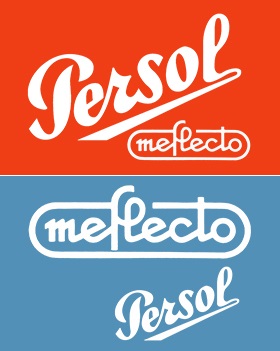 Persol RATTI meflecto all glasses...
Persol RATTI meflecto all glasses...
“In 1917 in Turin, Giuseppe Ratti, photographer and owner of the Berry optician’s, begins his adventure which will culminate with international success: in a small backyard in via Caboto he started creating technically advanced glasses, thought especially for aviators and pilots who need comfort, protection and optimal vision.”
The name Persol comes from the Italian “Per il Sole (for the sun)”. behind this name one can find the value of commitment which Giuseppe Ratti brought forward as leading exponent of Italian tradition along with his many virtuous collaborators.
Persol is not just a brand, it is pure Italian style, with its unmistakable/unique features. Not by chance, just a few years/shortly after his first creations, he managed to release the country from the need to import in this sector, exporting the 50% of his production and raising Italy to the levels of the global market.
The first model made by Persol date back to 1917. In that period Giuseppe Ratti dedicated himself to the creation of a pair of glasses for the Italian aviation.
With this purpose the model Protector was born (named this way in the ‘20s), created with round smoked lenses, surrounded by rubber and fastened to the head by plastic bands. This model will be shortly chosen by the Italian Armed Forces by the pilots of the Italian Military Air Force, as well as by top racing champions.
The models on the market until that time had normal lenses and were not able to properly protect the military and policemen wearing them. After constant research and confrontations, Ratti improved the glasses prototype for the aviation which had the property of protecting from dust and wind.
Benefiting from a special aeration system made with holes on the rubber tubular, these new glasses proved to be perfectly adherent to the face and the problem of air coming through was thus eliminated. The elastic band served as temple was of extraordinary high quality and well inserted. For such outstanding qualities the model was adopted and recommended by exponents of the Rome Air Force.
With the Protector model Ratti attained a relevant slice of both the Italian and international markets. In 1927 the model was adopted, after deep analysis, also by the Swiss Military Department, exactly for its structural and functional qualities.
Years later, after signing an agreement with a shatterproof car glasses manufacturing house
Based in Pisa, the model acquired shatterproof lenses, the ultimate detail which made the Predator the perfect glasses for aviators.
The glasses will then be further improved over the years, in new editions featuring the typical signs of the Persol brand such as the arrow (a functional and aesthetically unmistakable detail) and the dark-yellow lenses made of neutral crystal from pure silica, which ensured very high protection from harmful rays.
For the glasses were issued 14 patents and in the following years, as consequence of the success met in the aviation field, other models were studied to respond to the needs of all kind of clients, and especially for winter sports lovers.
Persol focused on sight problems of skiers and managed to eliminate the problem of reflected beam exposure on snow which can have damaging effects on sight, thanks to the use of little lateral nets, glare-shields, aluminum reinforcements finished with rubber or velvet, arriving up to the snow goggles in celluloid.
Such system allows the use of reading glasses at the same time and prevent them from being fogged thanks to a special device.
Together with the sports sunglasses was conceived also the famous “Cinesino”, graphic symbol of the Berry company created in the ‘20s by the great designer Golia.
The social issue of protection of workers’ sight was a real problem at that time. Statistics showed that 50% of industrial accidents involved sight as, despite regulations and laws in force, workers tent to shirk their eyes’ protection, as they felt the protective glasses on the market were heavy and inadequate.
Ratti overturned the idea of protection of the time, putting particular attention to an aspect which was ignored, such as the lenses which had to protect the eyes from infrared rays. He did not forget however to pay attention also to the design of the glasses, which had to meet the workers’ requirements.
The Labor model was released. For these glasses the field of vision was reduced together with the risk of break. This was in favor of the glass’ quality and thickness, although without increasing the weight, and at the same time giving to the lenses the right colouring and protection for different kinds of harmful rays.
A soft rubber edge gave the shape following the face’s curves. A band made it adaptable adjusting the distance of the aluminum reinforcement. Moreover the model was sold at a very low price in order to meet the clients’ needs.
In 1957 the 649 model was born, which will become icon of Persol’s style. Also this model was thought and created to meet the requirements of a specific category of the working class. This model in fact was originally thought for the tram drivers of Turin, who needed wide glasses to protect themselves from wind and dust. Thanks to its unique and original design this model will face huge popularity, it will be copied by other brands and worn by stars of that time such as Marcello Mastroianni in the film “Divorzio all’italiana (Divorce Italian Style)” of 1961. Model 649 never stopped being cutting edge and fashionable over time, to the point that, in 1994, it was included in the French volume “Qualità: scene d'objets à l'italienne” as example and representation of the Italian creative talent.
Still in 1957, following the signing of the Treaty establishing the European Economic Community, markets open up to international competition. A challenge which Giuseppe Ratti took up with his characteristic determination and from which will come out as winner as he did during the II World War years, when he continued with his production relying on his “family” of trustworthy workers.
As Giuseppe Ratti himself wrote in a communication to his employees:
“1958 has to be for all of us, without exceptions, a year of change, and a turning point for our work, as we have to be ready to overcome new situations and hard competition… we have competitive advantages at our disposal to protect us against the inevitable foreign competition: quality, prices, supply chain organization, and propaganda.”
(1971:113) Vita sociale a Torino
The perseverance on work and the passion for the quality of its products made it so that Persol Ratti won over also the American market in the 60's, with which it had already started a commercial relationship, since it supplied the Nasa with the magnificent “Quattro vetri” model ( “Four glasses”) worn by Totò and thereafter by Gary Oldman in the film “Hannibal”.
In the meanwhile the fame of these glasses was increasing also among famous people that started wearing them more and more, at work or on a daily basis.
The main models, just to mention a few, are Persol 714 wore by Steve McQueen, the Sports models publicized by Alberto Tomba and Jean Alesi. The 311 Persol with the unmistakable arrows plated with gold. The rare 805 model, the 649 also worn by Steve McQueen, the 69218 which became famous thanks to the popular TV series Miami Vice, where it was worn by Don Johnson and the “Cellor” model, with an exceptional frame half gold, half made in celluloid.
When Giuseppe Ratti dies in 1965, the factory goes in the hands of his son in law, Oreste Blumenthal, together with his sons and the collaborators of always. The years to come perpetuate the great care that Persol always reserved to technological innovation and to the attention towards its products. With this regard, it will participate to expeditions aimed at testing lenses at high altitude and in the desert , in order to verify the performance of the glasses in extreme conditions and in order to experiment new materials. It funds and it participates at the tough Paris-Dakar competition and supplies the equipment of an entire team for the Rally of the Pharaohes in 1991, it collaborates with mountain climbers during different expeditions on the Himalaya in the 80's and 90's, obtaining great results and progress.
“In Siberia, in Vorkuta beyond the 75th parallel, at minus 65 degrees, the Russian astronauts who landed during the survival practice, were equipped with Persol polarized multilayered glasses “.
The 70's 80's and 90's are years of great splendor, when unique pieces are being created never again remade, of the once-off design and with the best technical qualities, as for example the folding models :808, 810, 805, 806, 804, and the models: 69218 and 69202 which we can consider the best in the history of Persol. In 1991, it opened a Persol shop on the famous Rodeo Drive in Los Angeles, while a year after the Persol brand celebrated its 65th aniversary by producing the 649 model in a limited edition.
In the early 90's, the feminine image of the Persol is embodied by the great actress Ornella Muti, specially creating for her the 830 model; thereafter, in '93-'94 , the beautiful Carol Alt was chosen, model of great popularity, to whom they dedicated the 853 Carol model.
In April 1995, the Luxottica Group buys out the Persol brand , transforming it into one of the biggest brand in the eyewear industry worldwide, without abandoning its origin though, remaining faithful to quality and tradition. Actually, Luxottica will never abandon the production in the old factory of Lauriano in Turin, where it continues to produce Persol model even today.
Thanks to the constant committment and the study on the details, the Persol brand as already mentioned, has brought various improvements technical and not only, obtaining this way different patents. We can consider these inventions as integral part of the brand and image of the Persol. We mention therefore, the most important ones:
- Meflecto (the most important of all) introduced at the end of the 30's . The particularly fexible temples created with special work procedures, that at the same time maintain an extraordinary duration in time. They were the firsts ever and they could reflect thanks to the introduction of the nylon or metal cylinders intersected by a stainless steel core, that donates an incredible comfort, favouring the adaptability to every type of face.
- Super Meflecto, during the 60's the frame will be further improved with the Super Meflecto that are characterized the an articulated flexibility thanks to the plastic or metal cyliders mixed with celluloid.
- The Victor Flex , were created in the same years of the Meflecto and can be considered as the application of that concept. The glasses have a flexible bridge (the bridge 3 carves still used in the 649 model) that makes the frame curved on the inside, giving this way a higher adherence to the face. In the new models, a metal reinforcement was applied to the temples allowing to regulated the lenght and the curving.
- In the same period another model is born, la Freccia (the arrow), considered the key symbol of Persol : a joint hinge (this under a patent too under the name of Supreme Hinge)that is decorated with an arrow on the temple, inspired by the ancient warriors swords. This will undergo several changes before turning into what we see today. Innovations, given by Ratti's intuition, protected by patents in different countries, thing which will lead to popularity all over the world and to brand imitations because of its particular style.
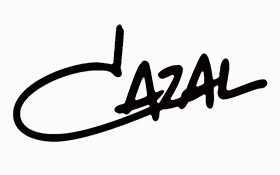 Cazal West Germany all glasses...
Cazal West Germany all glasses...
“You find the authentic only in brands that have written their design story”
Cari Zalloni
Cari Zalloni, before founding the brand Cazal, was a glasses designer at an international scale. The name Cazal derives from its creator, who wanted to put together the initials of his name and his surname as a symbol of the brand that marked the history of design thanks to his drawing skills and his inimitable genious.
The Cazal model differentiate themselves from others due to their brilliant design, out of the world.
The Cazal frames cannot be classified and remain the favourite of the trend-setters and the most appreciated in the fashion capitals, moreover they are built using high quality standards and exceptional materials.
The Cazal collections are eye-catching and sophisticated at the same time, never obvious, a distinguishable style characterized by specific features that never loses itself behind fashions, but follows its own way , going beyond tendencies.
The brand was founded in 1975, but its great success boomed in the 80's, a phenomenon defined by the ones that took part at it, as the Cazal Fever. Cari Zalloni gave the first rappers of that decade a leap in their appeal, thanks to his glasses of unique style, first of all to the new born star Usher. The Cazal style has defined the New York Hip-Hop scene since that moment on, and it never stopped surprising.
In 1982 the 600 line was launched, that includes the 607 model , glasses which were called “Cazzy” and then “RUN- DMC glasses” by the fans because it was worn by the famous artist. This model brought fame to the designer and remains also today one of the most appreciated ones. It was also produced in a limited edition in '87 , in dull-black..only 100 pieces in the world. In 1988 other two fantastic pieces are created: the 951 and the 955 models, both remaining an icon of the Cazal style. At the time, they were worn by Sammie Davis Junior, Stevie Wonder, George Clinton, the 623 was seen in the video “Bad” by Michael Jackson, while Cari Zalloni himself was wearing the 634 one. The uper high quality of the glasses made in West Germany was and still is a declaration of individualism and luxoury due to its extravagant qualities, at the same time refined. Therefore, it is a style that will never go out of fashion and remains appreciated by great personalities as Jay-Z, Rick Ross, Lady Gaga, Will I am, Snoop Lion, Chris Brown, Fergie, Rhianna, Gwen Stefani, Questlove, Cee Lo, Nelly, Meek Mill, Wale, Amare Stoudemire, Paul Pierce, Tim Nordwind, Spike Lee, Brad Pitt, and many more.
“To have something that is a true vintage you have to have something that was a true original”-Cazal creator Cari Zalloni
As Mr. Zalloni was saying, the thing that represents an icon, represents also an authenticity of a style, distinguishes itself from the mass because of its uniqueness and it never goes out of fashion because it is an “Authentic vintage”...a legend that never dies.
The Cazal models are various and often characterized by exotic colors, patterns and unusual frame shapes mainly created in plastic or metal, respecting high quality standards. For example, models made in metal as the 325 ,the 902, the 903, the 905, the 951 and the 955 are made of three layers of gold and platinum of 24 carats; while for coloring the frames, laque for porcelain is used, which is a more sophisticated technique than the simple varnishing one. The 858 and the 867 models with the plastic frame and with an asymmetrical design have revolutionized the fashion of the time, expressing the extravagance of the 80's. The model 858 in particular, was celebrated as being one of the most appreciated glasses of the Cari Zalloni production and was reproduced in 2007 under a limited edition; a version called “858x SWAGGER” with only 400 pieces worldwide. Nevertheless, according to an official survey on the Cazal webpage, the 951 model with its 4 lenses stays the favorite among the lovers of this brand. The glasses that are considered as being original vintage carry the brand “Made in W. Germany”; because the production started before the Fall of the wall, it is possible to recognize the oldest models easily thanks to this writing, carried on the temples. Recently, the Cazal brand has started to reacquire a notable success, thanks to the “Vintage”comeback in fashion,
as Cari Zalloni had predicted: “Vintage is the future of my past”.
 GIANNI VERSACE made in Italy all glasses...
GIANNI VERSACE made in Italy all glasses...
The history of the brand Versace begins during the 50s in Calabria, where little Gianni started to learn in order to prepare the ground to become a tailor in the workshop of his mother; his brother Santo and his sister Donatella grew in the same tailor studio, they have always been his allies and loyal partners . In February 1972 Gianni moved to Milan and started to collaborate with Florentine Flowers , De Parisini of Santa Margherita and also started to create clothes for the brands Complice, Genny and Callahan.
A few years later ( in 1976 )his brother Santo, who has graduated in economics and commerce, joined him in Milan and the two brothers started a business together with Claudio Luti .
In 1978 the first Versace collection modeled in the Permanente of Milan where it won the day. The brand Gianni Versace started a great rise and became unstoppable. A remarkable incentive to the diffusion of the brand was given by the friendships and contacts of Gianni Versace in the environment of art and theatre.
Versace in fact collaborated in his campaigns with some famous photographers like Avedon and Helmut Newton; he also created the stage costumes for many plays like "Josephglende" by Richard Strass, the "Lieb und Leid " of Gustav Mahler, the "Don Pasquale" by Donizetti and the "Dyonisos" of Bejart, giving a very significant contribution to the creation of scene clothes.
During the 80s the fashion creations became more and more futuristic and the materials became more special; in 1981 the famous knitted dresses in metal by Gianni Versace were presented to the world and he was exalted as the man who freed the Italian fashion from conformism.
The younger sister Donatella became part of the fashion house in 1988 as the director of the new born "Versace Versus" brand a fashion line for young people.
In 1991 they founded the brand Versace Signature and in 1993 the brand Versace Home Collection was dedicated to the interior design; in the early 90s they also began to produce haute couture clothes (as a part of the project Atelier) that modeled in Paris in 1990 .
The collaboration with his brothers has been essential to the famous designer: the business instinct and the marketing ability of his brother Santo, the managerial and creative talents of his sister Donatella brought the two brothers to take care of their Company after the premature death of Gianni in 1997, he was assassinated in his villa in Miami by a gigolo - serial killer.
In '99 the Versace Group stipulated an agreement with Italocremona ( the producer of glasses from Gazzada , near Varese) in order to create glasses collections Versace and Versus. This agreement between the two partners led to the creation of a new society: the LC Optic spa. This society was created in order to boost industrial development and the distribution in the optical sector and to widen this market in America and in the Eastern countries, as well as to acquire new licenses and develop models for young people through the brand Versus .
Italo Cremona dealt with the distribution in Europe and of course with the technical interpretation of the models through the development of stylistic input; so thanks to this successful collaboration the Versace group was able to turn its glasses into a fetish accessory appreciated by all celebrities .
One of the most important period of the brand was the hyper-hedonist era during the ‘80s when the typical products were the frames and the masks with Greeks and Medusas on the temples that were also famous during the ' 90s. In 2000 they produced surf style two-colours frames, with wide embracing shapes enriched with décor details.
In Gianni Versace fashion creations the quality of the materials is highly important and they are usually combined in unusual and heterogeneous combinations. The Versace dresses are made of rubber, silk and specials metals wiselyand creatively mixed up. Versace style wants to bring out the sensuality of women and their seductive skills; Gianni Versace’s creations are known for their vibrant prints, because they are elaborate and luxurious. Regarding to the eyewear, his creation are an alternation of classical lines, rich colors palettes and carved gold.
Versace eyeglasses are characterized by their contemporary shapes and the high quality of their design. The symbol of the brand was designed by Donatella Versace and it is always on every frame. It’s the Medusa that is the symbol of its own mythology. It's a reference to the classical roots of the land of the Versace’s family and symbolizes the power of a magnetic and seductive woman. Medusa is the representation of the sensual attraction of the women that leaves no way and that has to be exalted by the item of clothing; who is seducted by the brand of Medusa can not go back.
We want to remember, about Versace style, the fantasy and the Baroque period that made him famous in the 80s in addiction to a series of experiments and twists: psychedelia sometimes trashy, punk - rock look or the Renaissance style ... Versace creations were always different and they reached their climax in the ‘90s with the motto "Less is boring". In its years of splendor Versace became one of the most famous brands in the world of Hip Hop, worn and “sung " by the icons of the time as Puff Daddy, Lil 'Kim and Notorious BIG who rarely got separated from his VERSACE 413.
Even Elton John was a great fun and friend of Gianni Versace, Madonna (a great friend of Donatella ) has also been repeatedly promoting the brand from the 90s until today... In this moment in which Vintage is back in fashion, Versace’style is back stronger than ever especially regarding to the glasses models; the pop stars Lady Gaga and Rihanna are great funs of the frames of Versace fashion house.
The designer won a lot of prizes over the years as the title of "Commendatore of the Italian Republic" conferred to him in 1986 by the President of the Italian Republic Francesco Cossiga. The "Grande Medaille de Vermeil de la Ville de Paris”, assigned by the head of state of France in 1987 Jacques Chirac and the Oscar for the American fashion assigned to him in 1993, but the real quality of the house Gianni Versace is that it has left an indelible mark in the history of fashion.
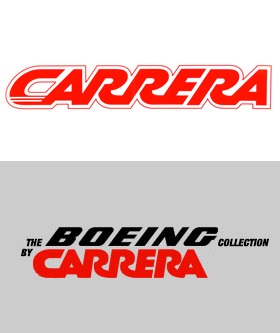 CARRERA made in Austria all glasses...
CARRERA made in Austria all glasses...
Carrera was born in 1956 from the genius of Wilhem Anger, already a sports eye-wear producer. The Austrian designer ( of Ceck origins) wanted to produce a new sportsline glasses. He got inspired by the legendary “Carrera Panamerica”, the famous car race that in the 50's was considered a being the longest, the most dangerous and the fastest in the world. Such a race, went across the entire America, from North to South on over 3000km, crossing Mexico and celebrating the completion of the Panamerican Highway.
In 1965 he put under a patent a material for frames, called Optyl: a hard plastic, but 20% lighter compared to the acetate and other thermoplastical materials. Such a material reduces the complications induced by allergies of the glasses carriers and has an “elastic” component that tends to memorize the face of whom is wearing them, adapting itself to it. Moreover, it made it cheaper to produce glasses in plastic compared to the ones available for sports on the market.
The history of Carrera is dominated by the research of innovation towards a better quality of usage. In 1970 it starts to produce helmets and ski masks, being the first to make ski masks with interchangeable lenses in 1974.
In the same year, the company changed name into Carrera International, with headquarter at Traum, in Austria and in 1979 due to a collaboration with car designer Ferdinand Alexander Porsche, the project Carrera Porsche design was born: a line of folding glasses that marked the history of Carrera.
In 1981 Carrera starts to expand, selling in the entire world, and starting the production of sight glasses, that was included in the elegant Carrera Porsche design line. 1986 another successful production takes place: the Boeing and Sunjet line. These are years of great success for the brand, sponsor of the American Cup 87' and super used at the Winter Olympics in 88', where even the famous Jamaican team of Bob was wearing the Carrera masks. It's the brand that with its number of masks sees the highest numbers of victories. Even Gerhard Berger, the formula 1 champion, won the championship wearing Carrera.
In 1989 an eye-wear line dedicated to cycling was born in occasion of the Paris-Roubaix, moreover the following year it will start producing helmets for bikes.
In 1996 The Safilo group bought Carrera, transferring the company in Padua and the production in China. In this period the famous system with double lenses long lasting sealed ring against the fog up was born.
Among the main Carrera models, we can mention the Boeing model, the 5623 Porsche design model, the 5621 Porsche design model. In the last years, the Carrera glasses were worn by a number of international celebrities: sports icons like Gilles Villeneuve, Niki Lauda, Gerhard Berger, Jenson Button, to music stars and Hollywood stars like Brad Pitt, Leonardo di Caprio, Halle Berry, Rhianna, Kylie Minogue, Justin Timberlake, Kanye West, Michael Stipe, Jessica Alba.
Moreover, the Carrera glasses were protagonists on film sets like “Downhill racer”, with Robert Redford, TV series like Miami Vice, and music videos like “Bad romance” by Lady Gaga and “Rude boy” by Rihanna, “Try to sleep with a broken heart” by Alicia Keys, “Not myself tonight “by Christina Aguilera and “Hey Daddy” by Usher.
 VIENNALINE by Optyl Austria all glasses...
VIENNALINE by Optyl Austria all glasses...
The ViennaLine Brand has been created by Wilhelm Anger during the ’50s as a branch company of Anger OHG, already active for a decade in the production of protective eyewear for welders.
Between the ’60s and the ’90s ViennaLine created acetate eyeglasses frames in a retro style, elegant and unique, these colorful and particular lines became famous thanks to the designer Udo Proksch known as the man who caused the explosion of a boat in 1977 to get insurance money and that was sentenced to life imprisonment for the killing of six people.
At that time Vienna was considered a hot spot in European map; Its reputation of a city of culture, music and art added to its strategic position close to the USSR, made it the perfect place for spying and intrigue; this atmosphere of mystery and adventure acted as a springboard for the models of the brand.
In the early '50s, Anger and Proksch managed to turn a factory of glasses for workers in a famous house of production of fashion glasses, the most luxurious and elegant of that era.
The models “Gigi” and “Alt-Wien” are the most popular of the house, in fact 15 million of copies of Gigi have been sold. As in many other cases in fashion history, the marketing campaign made the difference and brought success to the brand. Viennaline glasses appeared in posters with dramatic images of famous dancers, that made this line of eyewear very popular at that time.
Another feature that is typical in ViennaLine glamorous style is the “Cat Eye” which became famous before the outbreak of the trend in the American star-system of mid '50s.
The Cat Eye shape came out shyly from the first creations with small tips on the outer corners of the frame pointing upwards while the front part of the frame was thicker and separated in the middle by a delicate bridge which avoided a pronounced monolinear effect.
Over the years the timid "Cat Eye" shape turn into the so-called "Butterfly Wings", which was different from the British and American models: it was less extended and wider to soften the linear tension formed by the high tips of the end pieces.
The frontal part was thicker than the rest of the frame, but it had a curvy shape that was wider in the outer part, it was narrower and lower on the bridge; this was a trick that made the look bold and winking but always stylish, perfect for the women of the time.
As many glasses factory of the period, even the ViennaLine house dealt with new technical solutions and materials to improve the design of its frames.
It was Wilhelm Anger, in his research laboratory that introduced the revolutionary material Optyl: a kind of plastic that is strong and rigid enough to allow not to use metal supports, but that is at the same time lighter than Zyl .
The Optyl was used in the revolutionary Carrera models , in fact Mr. Anger was also the owner of that Brand and Udo Proksch was also the chief designer of Carrera, while for Viennaline he drew a line of sunglasses particularly bold and futuristic called "Serge Kirchhofer" his official name as a designer which he used to sign the drawings of his Porche Design models .
The very elegant sand sinuous shapes of Viennaline models sometimes were enriched with delicate decorations: silver filigree , small stones and metal details that sometimes remembered the Baroque manners or more often harked back to the delicate art Nouveau curves. The brand Viennaline, created timeless style looking toward the past, whose refined references grasp the retro glamour taste of which the Viennaline production is exponent.
DUNHILL by Optyl made in Austria all glasses...
Alfred Dunhill was born the 30th of September 1872 and he grew up in close contact with his father's business: a leather factory where he learned the good craftsmanship.
In 1893, when he was 21, he inherited the factory from his father and up to that moment his passion for the good craftsmanship increased up to be compared to a religious faith.
Young Alfred initially transformed his father's company into a supplier of leather accessories for car, whose market started to develop in those years. He opened his first store in 1902 in London, Mayfair; later thanks to his unstoppable enterprising spirit, Alfred Dunhill started three new businesses: a dealership of cars, an employment bureau for mechanicals and a newspaper called Motor Mart.
He soon created the brand Dunhill Motorities® for the production of leather and metal car accessories, as well as driving protective clothing. Thanks to Alfred’s ability in business and to his pioneering way of thinking, the Dunhill industries developed internationally providing customers as the RollsRoyce. The Dunhill products are characterized by a high artisan quality and are innovative in every sector: apparel , leather goods and accessories .
During the years his creative genius have designed leather covers for cars and other products for aficionados and pilots.
In 1904 Mr. Dunhill produced a pipe that allowed smoking in the car despite the wind; this was his way in the tobacco industries, which up to this moment represented the jewel in the crown of the DUNHILL LUXURY GOODS COMPANY. The first shop specialized in tobacco opened in 1907 in St. James and then others opened in New York and Paris during the '20s. In 1908 Dunhill produced its first cigarette and in 1924 launched on the market the first lighter in the world that you could use with one hand.
The Dunhill vintage Lighters and pipes are considered collectors’ items as well as their glasses, in fact, in 1921 the Prince of Wales Edward VIII awarded to the Dunhill industries with its first Royal Warrant, because even the royal family used these its products.
The Dunhill Luxury Goods Company was one of the first companies to produce various types of goods and products with only one brand and to sell them all over the world in advance of the next trend (the trend of this period). Alfred Dunhill succeed in create a brand that represents the excellence of handicraft in the various sector where it works.
In the production of sunglasses and frames, Dunhill utilized the same devotion and attention to details. It’s easy to feel his love for the original design observing the classic and well delineated lines of his models. The Dunhill glasses production is the symbol of the solid artisan origins of the brand but, at the same time it looks forward to the new slant and it amazes with its modernity.
The Dunhill glasses were immediately appreciated by English gentlemen, thanks to their elegant lines and their timeless style that represent as well the English nobility.
In the Dunhill models are used precious metals together with clear lines and traditional colors, but at the same time the functionality of the products is really important for the company; that is the main feature of the brand. Those models can be considered the perfect combination of elegance and efficiency.
Well-appreciated by vintage lovers and by celebrities such as Jay-Z, Usher and others, the vintage models Dunhill were produced by the famous Austrian Optyl industry, that also produced Viennaline glasses and Christian Dior.
